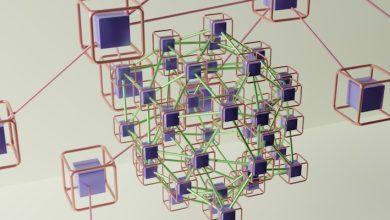Helium (HNT): The People’s Network

- What is Helium (HNT) and how does it work?
- The decentralized network connecting devices around the world
- How individuals can participate in the Helium network
- The potential impact of Helium on IoT and connectivity
- Exploring the unique features of the People’s Network
- Challenges and opportunities for the future of Helium (HNT)
What is Helium (HNT) and how does it work?
Helium (HNT) is a decentralized wireless network that enables devices to communicate with each other without relying on a central authority. It works by using a combination of blockchain technology and a unique proof-of-coverage consensus mechanism.
When a device wants to send data over the Helium network, it broadcasts a message to nearby hotspots, which are small hardware devices that act as relay points. These hotspots then relay the message to other hotspots until it reaches its destination.
Hotspot owners are incentivized to participate in the network by earning HNT tokens for providing coverage. This creates a self-sustaining network where coverage expands as more hotspots join.
Overall, Helium is revolutionizing the way devices connect to the internet by creating a decentralized network that is secure, efficient, and cost-effective.
The decentralized network connecting devices around the world
The decentralized network of Helium (HNT) is revolutionizing the way devices connect worldwide. By leveraging a unique blockchain technology, Helium allows devices to communicate securely and efficiently without the need for traditional centralized servers. This peer-to-peer network enables seamless connectivity for a wide range of Internet of Things (IoT) devices, from smart home appliances to industrial sensors.
How individuals can participate in the Helium network
To participate in the Helium network, individuals can become a part of the decentralized network by setting up a Helium Hotspot. These hotspots act as the backbone of the network, providing coverage and connectivity for various Internet of Things (IoT) devices. By setting up a Helium Hotspot, individuals can earn HNT tokens for providing this valuable service to the network. Setting up a Helium Hotspot is a simple process that involves connecting the device to the internet and following the instructions provided by Helium. Once the hotspot is set up, individuals can start earning HNT tokens and contribute to the growth of the network.
The potential impact of Helium on IoT and connectivity
Considering the potential impact of Helium on the Internet of Things (IoT) and connectivity, it is evident that this technology has the capability to revolutionize the way devices communicate and interact with each other. By leveraging Helium’s decentralized network, IoT devices can connect in a cost-effective and scalable manner, without relying on traditional centralized infrastructure.
One of the significant advantages of Helium is its ability to provide long-range wireless connectivity, which is crucial for IoT applications spanning large geographical areas. This extended coverage enables devices to communicate over vast distances, making it ideal for applications such as smart agriculture, asset tracking, and environmental monitoring.
Furthermore, the decentralized nature of the Helium network enhances reliability and security, as data is transmitted through a distributed network of nodes rather than a single point of failure. This ensures that IoT devices can communicate securely and efficiently, without being vulnerable to centralized attacks or disruptions.
In conclusion, Helium presents a promising opportunity for enhancing IoT and connectivity, offering a cost-effective, scalable, and secure solution for a wide range of applications. By leveraging the power of this innovative technology, businesses and individuals can unlock new possibilities for connectivity and communication in the digital age.
Exploring the unique features of the People’s Network
The People’s Network offers several unique features that set it apart from other traditional wireless networks. One of the most notable aspects of the People’s Network is its decentralized nature, which means that it is not controlled by any single entity or organization. Instead, the network is powered by a community of individuals who host hotspots and earn HNT tokens in return.
Another key feature of the People’s Network is its use of LongFi technology, which allows for long-range, low-power communication. This technology enables devices to connect to the network over large distances, making it ideal for use cases such as IoT applications and asset tracking. Additionally, the People’s Network is built on the Helium blockchain, which provides a secure and transparent platform for transactions.
One of the advantages of the People’s Network is its low cost, making it accessible to a wide range of users. By leveraging existing infrastructure and incentivizing individuals to participate in the network, the People’s Network is able to offer affordable connectivity solutions. This scalability and cost-effectiveness make the People’s Network an attractive option for businesses and individuals looking to deploy IoT devices or create new applications.
Challenges and opportunities for the future of Helium (HNT)
Looking ahead, Helium (HNT) faces both challenges and opportunities that will shape its future trajectory. One of the main challenges is the need to expand its network coverage to reach more users and devices. This will require ongoing investment in infrastructure and technology to ensure reliable connectivity.
On the other hand, there are also significant opportunities for Helium (HNT) to grow and thrive. As the demand for IoT devices continues to rise, there is a growing need for decentralized, low-cost connectivity solutions. Helium’s unique blockchain-based network offers a promising alternative to traditional telecom providers.
One of the key opportunities for Helium (HNT) lies in its community-driven approach. By incentivizing users to operate hotspots and participate in the network, Helium can continue to expand its reach and offer innovative solutions for IoT connectivity.
Overall, the future of Helium (HNT) looks bright, with the potential to revolutionize the way IoT devices communicate. By addressing challenges and seizing opportunities, Helium can continue to grow and establish itself as a leader in the world of decentralized connectivity.



